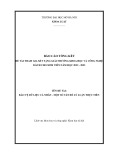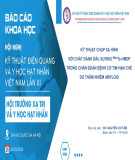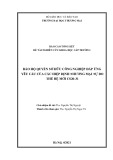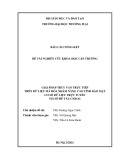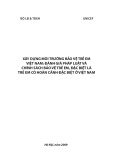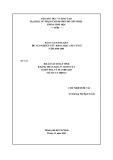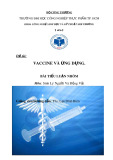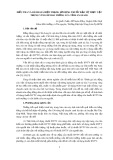
BioMed Central
Page 1 of 11
(page number not for citation purposes)
Journal of Inflammation
Open Access
Review
Mesenchymal stem cells avoid allogeneic rejection
Jennifer M Ryan1, Frank P Barry2, J Mary Murphy2 and Bernard P Mahon*1
Address: 1Institute of Immunology, National University of Ireland, Maynooth, Co. Kildare Ireland and 2Regenerative Medicine Institute (REMEDI),
National Centre for Biomedical Engineering Science, National University of Ireland, Galway, Ireland
Email: Jennifer M Ryan - JENNIFER.M.RYAN@nuim.ie; Frank P Barry - frank.barry@nuigalway.ie; J Mary Murphy - mary.murphy@nuigalway.ie;
Bernard P Mahon* - bpmahon@nuim.ie
* Corresponding author
Abstract
Adult bone marrow derived mesenchymal stem cells offer the potential to open a new frontier in
medicine. Regenerative medicine aims to replace effete cells in a broad range of conditions
associated with damaged cartilage, bone, muscle, tendon and ligament. However the normal
process of immune rejection of mismatched allogeneic tissue would appear to prevent the
realisation of such ambitions. In fact mesenchymal stem cells avoid allogeneic rejection in humans
and in animal models. These finding are supported by in vitro co-culture studies. Three broad
mechanisms contribute to this effect. Firstly, mesenchymal stem cells are hypoimmunogenic, often
lacking MHC-II and costimulatory molecule expression. Secondly, these stem cells prevent T cell
responses indirectly through modulation of dendritic cells and directly by disrupting NK as well as
CD8+ and CD4+ T cell function. Thirdly, mesenchymal stem cells induce a suppressive local
microenvironment through the production of prostaglandins and interleukin-10 as well as by the
expression of indoleamine 2,3,-dioxygenase, which depletes the local milieu of tryptophan.
Comparison is made to maternal tolerance of the fetal allograft, and contrasted with the immune
evasion mechanisms of tumor cells. Mesenchymal stem cells are a highly regulated self-renewing
population of cells with potent mechanisms to avoid allogeneic rejection.
Review
Introduction: What are Stem Cells?
The term "stem cell" can be applied to a remarkably
diverse group of cells. These cells, regardless of their
source, share two characteristic properties. Firstly, they
have the capacity for prolonged or unlimited self-renewal
under controlled conditions, and secondly they retain the
potential to differentiate into a variety of more specialized
cell types [1,2]. The stem cells that arise during the first
days of mammalian embryonic development are pluripo-
tent and are referred to as embryonic stem (ES) cells.
These are usually derived from the inner cell mass of the
pre-implantation embryo, at the blastocyst stage[3]. How-
ever stem cells are not confined to tissues of early develop-
ment, but can also be found at various sites in the adult
mammal. Adult stem cells are more differentiated then ES
cells but can still give rise to specialized lineages[1,2]. The
best-described populations to date are the hematopoietic
stem cells (HSC) of the bone marrow that can generate
various blood cells[4]. However the bone marrow also
contains a population of mesenchymal stem cells (MSC)
[1,2]. These cells, first characterized by Friedenstein and
colleagues more than thirty years ago, are multipotent
cells capable of differentiating into several lineages
including; cartilage, bone, muscle, tendon, ligament and
adipose tissue[2,5,6]. In their undifferentiated state, MSC
Published: 26 July 2005
Journal of Inflammation 2005, 2:8 doi:10.1186/1476-9255-2-8
Received: 01 April 2005
Accepted: 26 July 2005
This article is available from: http://www.journal-inflammation.com/content/2/1/8
© 2005 Ryan et al; licensee BioMed Central Ltd.
This is an Open Access article distributed under the terms of the Creative Commons Attribution License (http://creativecommons.org/licenses/by/2.0),
which permits unrestricted use, distribution, and reproduction in any medium, provided the original work is properly cited.





